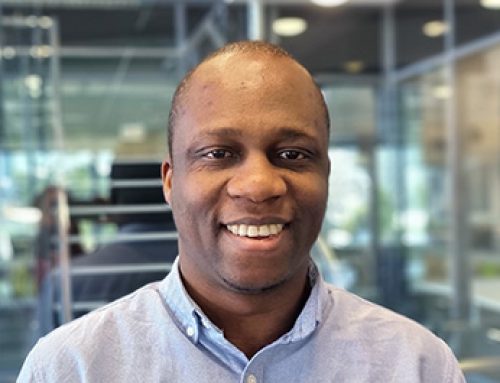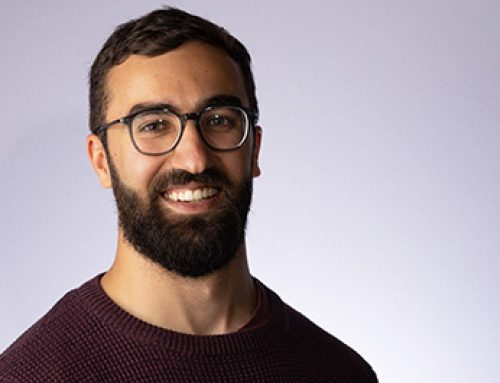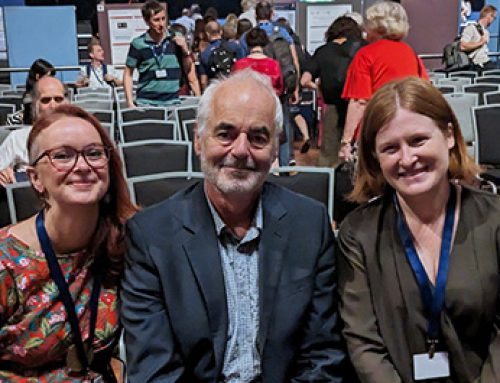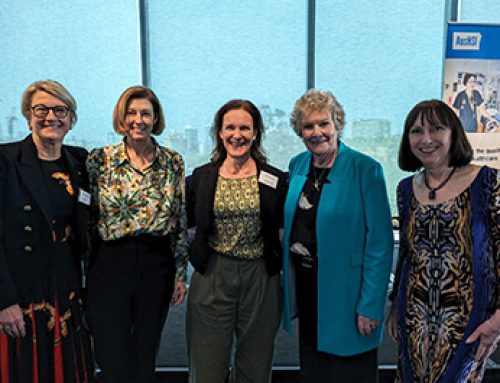Digital Health CRC Curiosity Camp: Navigating interdisciplinary blind spots
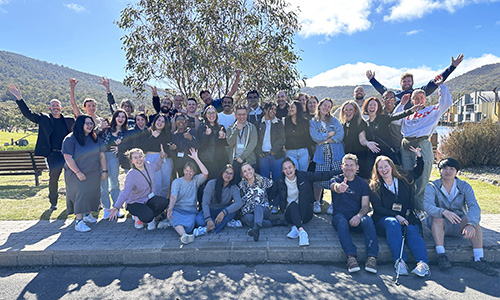
DHCRC emerging leaders at Camp Curiosity, Lake Crackenback, NSW
By Manasha Fernando, AusHSI PhD Scholar
The Digital Health Cooperative Research Centre (DHCRC) held its inaugural Curiosity Camp at Lake Crackenback in NSW in November 2023. Designed as an immersive learning experience, the camp brought together DHCRC emerging leaders, consumers, innovators, and researchers to address real-world healthcare problems.
As a partnering member of the DHCRC, PhD students from AusHSI were lucky enough to be invited to attend the camp. Camp guests were assembled into five “tribes”, which were formed around different industry challenges, and spent the week collaborating on solutions.
When I first attended Curiosity Camp, I wasn’t sure what to expect. Would it be a chance to enjoy the picturesque views at Lake Crackenback, delve into unfamiliar aspects of chronic health, or share the research journey with like-minded higher-degree research students? While I did experience all of this, what truly stood out to me was my tribe’s remarkable collaborative skills in identifying gaps and addressing potential problems.
Our topic focused on unravelling interdisciplinary blind spots in chronic health conditions to address the common issue of patients grappling with multiple health concerns. While research often concentrates on single or indexed conditions, we firmly agreed that incorporating those with multiple health conditions would lead to more accurate research, policy, and practice outcomes that mirror real-world needs. To my surprise, much of our time was also dedicated to confronting our own interdisciplinary blind spots.
Comprising individuals from diverse disciplines and backgrounds including health economics, engineering, and allied health, our tribe used mind mapping to systematically scrutinise the deficiencies of single-disease-focused research. Each member brought a unique perspective to the group, ranging from lived experiences of chronic illness, to practitioners navigating work-life balance in clinics, and others highlighting resource constraints or the lack of infrastructure to drive change in the healthcare system.
The outcome was an overwhelming collection of over one hundred sticky notes, each representing key areas of the healthcare system to target, which admittedly seemed daunting. However, sessions featuring guest speakers who shared their experiences navigating the complex healthcare landscape served as a reminder that collaboration could yield meaningful solutions. Our team successfully narrowed down the top three areas to target, some of which I hadn’t initially associated with chronic conditions.
Instead of settling on a single solution to a multifaceted problem, our team devised several approaches. The plan included a comprehensive research and community of practice proposal to build an evidence base and network. The goal was to guide the development of policy briefs, media releases, and op-eds, fostering awareness and advocating for change to better reflect real-world needs. Much as I found within our tribe, this proposal creates a space to work past interdisciplinary blind spots, meeting the diverse needs of those grappling with multiple health conditions.


